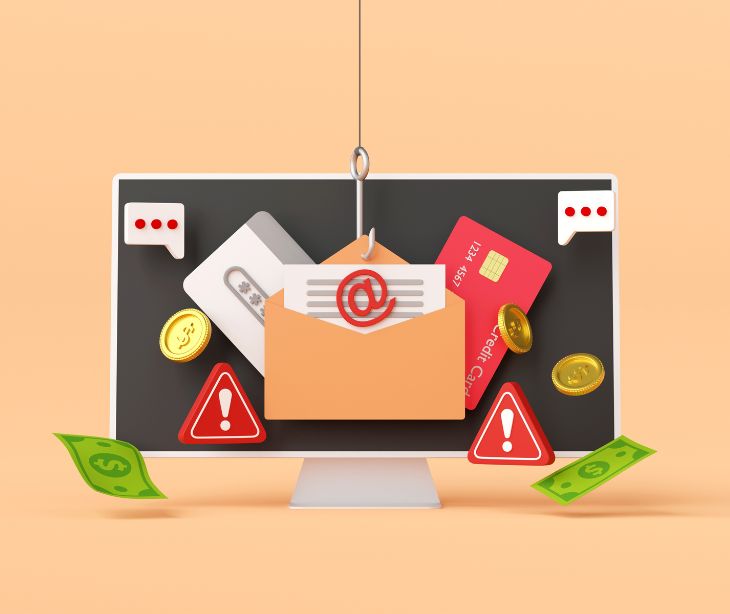
Whaling attacks, also known as CEO fraud, are a method cybercriminals employ to target senior individuals within an organization. These malicious actors impersonate high-ranking executives to deceive employees into revealing sensitive information, transferring funds, or gaining unauthorized access to computer systems.
Understanding whaling attacks
Whaling attacks specifically target senior or influential individuals within an organization. These "big phish" or "whales" are typically high-ranking executives such as CEOs, CFOs, or finance managers. By impersonating these individuals, cybercriminals exploit the trust and authority associated with their positions, making it more likely for their fraudulent requests to be fulfilled.
Whaling attacks leverage various techniques, including email and website spoofing, to create the illusion of legitimacy. Attackers invest time and effort into researching their targets, using publicly available information from sources like social media to craft personalized and convincing messages.
Related: What is cyber extortion in healthcare?
Real-life whaling attack examples
Numerous high-profile cases highlight the severity of whaling attacks and their potential impact on organizations. In 2016, Snapchat's payroll department fell victim to a whaling attack when they received an email seemingly sent by the CEO, requesting employee payroll information. The attack resulted in the exposure of sensitive data.
Another notable incident involved toy giant Mattel, where a top finance executive received an email from a fraudster posing as the new CEO, requesting a money transfer. The company narrowly avoided a loss of $3 million. These real-life examples emphasize the urgent need for organizations to implement defenses against whaling attacks.
Protecting your organization
Defending against whaling attacks requires a multi-layered approach. By implementing the following strategies, organizations can reduce the risk of whaling attacks:
Employee education and awareness
Regular training sessions should be conducted to raise awareness of cybercriminals' tactics and instill a healthy level of skepticism.
Staff members should be trained to question unsolicited contact, especially when it involves sensitive information or financial transactions. They should be encouraged to verify the authenticity of requests by contacting the sender through alternative channels, such as phone calls or face-to-face meetings.
Spotting the signs
Identifying the signs of a whaling attack is necessary for preventing breaches. Employees should be trained to look out for spoofed email addresses and names. Additionally, suspicious requests or unusual behavior, such as unexpected urgency or payment instructions, should be treated cautiously.
Social media awareness
Executives and employees should exercise caution when sharing personal and professional information on social media platforms. Limiting the amount of personal information shared publicly and adjusting privacy settings to restrict access to sensitive details is advisable.
Email filtering and validation
Implementing email filtering systems can help identify and flag potentially fraudulent emails originating from outside the organization's network. Furthermore, deploying specialized anti-phishing software can enhance protection by screening URLs and validating links in incoming emails.
Multi-factor authentication and authorization
Enforcing multi-factor authentication and authorization processes can add an extra layer of security when handling critical tasks or sensitive information. Requiring face-to-face meetings or phone calls for high-risk transactions can minimize the risk of fraudulent requests being fulfilled electronically.
Incident response and reporting
Establishing an effective incident response plan is necessary for mitigating the impact of whaling attacks. Organizations should have clear protocols for reporting incidents and responding promptly to suspected attacks.
See also: HIPAA Compliant Email: The Definitive Guide
Our suggestion: Paubox ExecProtect
This is a specialized email security solution designed to address targeted phishing attacks, often known as spear-phishing. Paubox ExecProtect works by specifically protecting executive-level email accounts, which are common targets for hackers due to their high-level access and authority. The system uses advanced algorithms and filters to detect and block phishing attempts, including those that use domain name spoofing, where attackers mimic a legitimate domain to trick recipients.
Learn more: HIPAA Compliant Email: The Definitive Guide
In the news
In September 2023, an incident occurred at the Serum Institute of India (SII), a leading pharmaceutical company, where an official fell victim to a sophisticated phishing attack known as whaling. Impersonating the company's CEO, Adar Poonawalla, cybercriminals contacted the official via WhatsApp and instructed them to transfer over $135,000 to multiple bank accounts. Deceived by the convincing impersonation, the official proceeded with the transactions, transferring the funds into the hands of the perpetrators. Upon discovering the fraud, SII promptly alerted the Pune police and filed a complaint.
FAQs
What is whaling and how does it relate to healthcare security?
Whaling, also known as CEO fraud or business email compromise (BEC), is a targeted phishing attack where cybercriminals impersonate high-level executives or trusted figures within an organization to trick employees into revealing sensitive information or making financial transactions. In healthcare, whaling attacks can lead to breaches of patient data, financial loss, and damage to organizational reputation.
Why are whaling attacks a significant threat to healthcare organizations?
Whaling attacks are big threats because they exploit trust and authority. By impersonating executives or main personnel, attackers can manipulate employees into divulging confidential information or transferring funds, potentially compromising patient data security and disrupting healthcare operations.
What measures can healthcare facilities take to prevent whaling attacks?
Healthcare facilities can prevent whaling attacks by implementing email security measures, such as advanced spam filters and email authentication protocols (e.g., DMARC, SPF, DKIM), conducting regular cybersecurity training to educate staff about phishing tactics and the imperativeness of verifying email requests, and establishing strict procedures for verifying financial transactions and sensitive information requests.
How do whaling attacks impact HIPAA compliance?
Whaling attacks impact HIPAA compliance by increasing the risk of unauthorized access to protected health information (PHI). Successful attacks can result in data breaches, violating HIPAA’s requirements for safeguarding PHI and potentially exposing organizations to penalties, legal liabilities, and reputational harm.
Subscribe to Paubox Weekly
Every Friday we'll bring you the most important news from Paubox. Our aim is to make you smarter, faster.




